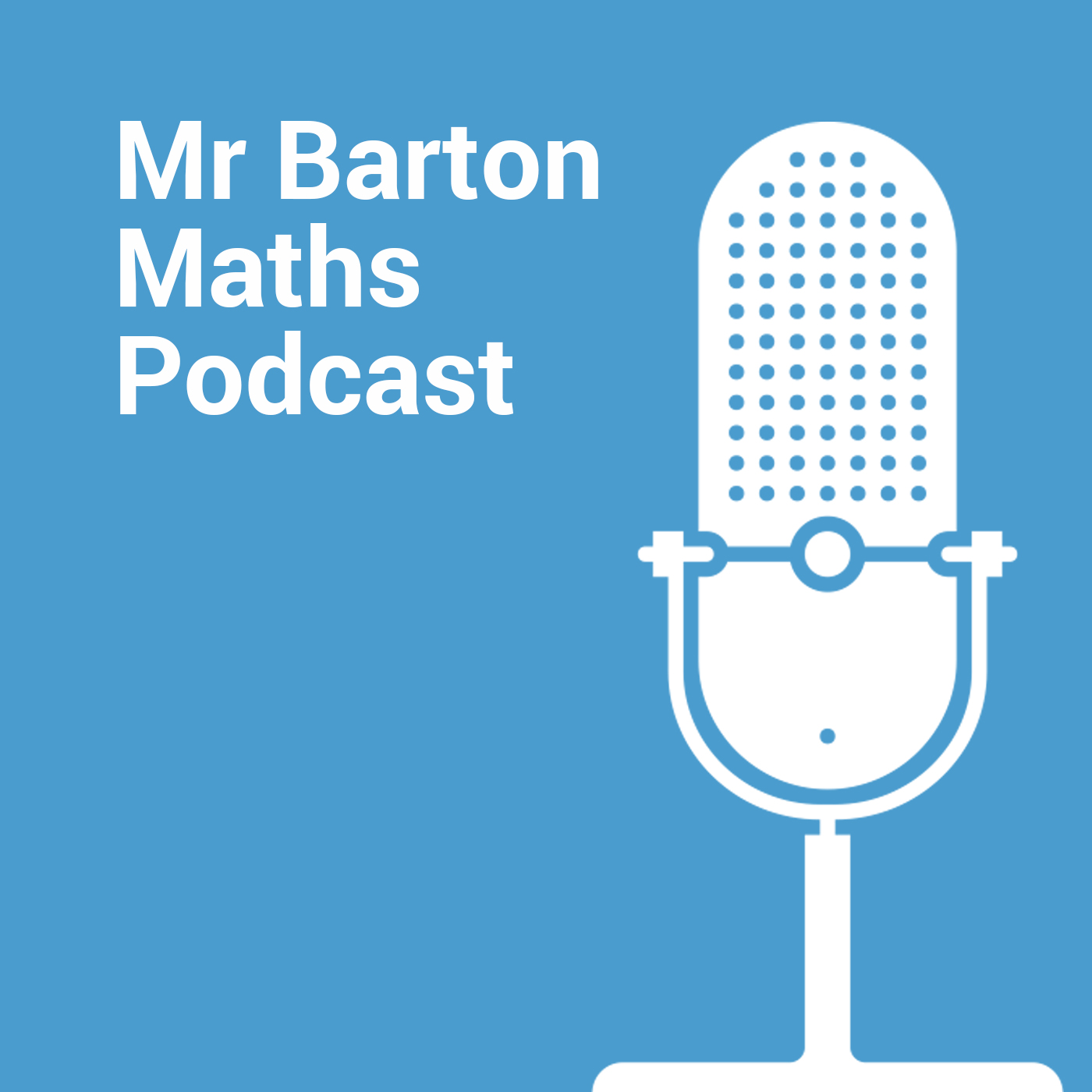#190 Atomisation and Unstoppable Learning with Kris Boulton
Description
Kris Boulton returns to the podcast to discuss atomisation and how it can lead to unstoppable learning for our students. You can access the show-notes here: mrbartonmaths.com/blog/atomisation-kris-boulton
Timestamps:
Atomization in mathematics education, with a focus on expertise-induced blindness and its impact on students' understanding. (10:57)
Breaking down complex processes into simpler steps. (15:12)
Teaching methods using a taxonomy of seven concepts (categories, comparative, transformation, fact, and process). (19:40)
Categorical concepts, comparatives, and transformations in mathematics. (23:43)
Identifying and teaching mathematical "atoms" for better instruction. (29:38)
Teaching math concepts by breaking them down into smaller, familiar "atoms" to help students understand and build upon them. (38:18)
Simplifying math expressions using factoring and atomization. (44:09)
Teaching math concepts by breaking them down into smaller, more manageable "atoms" to help students understand and build confidence. (49:48)
Categorical concepts in math education, with a focus on non-examples. (53:43)
Importance of examples in teaching, with a focus on the limitations of language in conveying concepts. (57:31)
Teaching concepts using examples and definitions. (1:03:31)
Using correlated features in math teaching. (1:08:50)
Teaching quadratics with examples and caveats. (1:13:28)
Using examples to teach concepts, including minimally different and maximally different examples. (1:19:20)
Teaching language learners using negative examples first. (1:27:01)
Teaching math concepts using examples and testing sequences. (1:31:20)
Decisions and categorization in math education. (1:35:10)
Using language to make math problems easier. (1:39:51)
Differentiating between cognitive routines and transformations in math. (1:45:04)
Teaching math concepts using different methods. (1:48:25)
Teaching math concepts to children using a step-by-step approach. (1:54:18)
Using mini whiteboards for testing sequences in math class. (1:59:19)
Teaching strategies, emphasizing the importance of interactive learning and using whiteboards. (2:02:36)
Using simplified symbols vs. expert-level symbols in math education. (2:07:59)
Using continuous conversion in math lessons. (2:12:00)
Teaching math concepts using cognitive routines. (2:20:02)
Teaching math concepts to students using explicit and implicit methods. (2:25:28)
Teaching strategies, including non-examples, identifying concepts, and managing classroom noise. (2:32:03)
Math education, examples, and training. (2:35:28)
Improving math education with technology and hybrid learning models. (2:39:19)
Teaching methods and classroom management. (2:43:42)
Teaching math to mixed-ability students, emphasizing the importance of exploration and unveiling mathematical concepts. (2:50:08)
Teaching math to high school students, focusing on approach for different learners. (2:53:42)
Teaching probability with creative problem-solving strategies. (2:57:47)
Breaking down complex math concepts into smaller parts for better understanding. (3:01:57)
Sequencing examples in teaching, emphasizing clarity and brevity. (3:06:53)
Using "atomization" to teach math concepts more efficiently. (3:11:09)
More Episodes
In this episode, Ollie and I tried something different. I've been working with a school to help develop a departmental lesson structure with their maths team. I know Ollie had been doing something similar with a school he has been working with, so it seemed a good idea to chat through our ideas...
Published 11/01/24
Ollie Lovell sent me a recording of a maths lesson he had recently taught in a school he has been supporting. I suggested we discuss the lesson, centring around Ollie’s planning, the decisions he made, and his responses in the lesson. Fortunately, Ollie agreed, hence what you are listening to...
Published 08/31/24
Published 08/31/24


